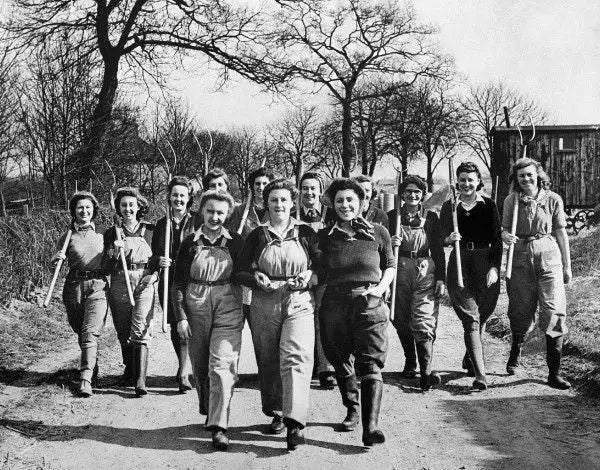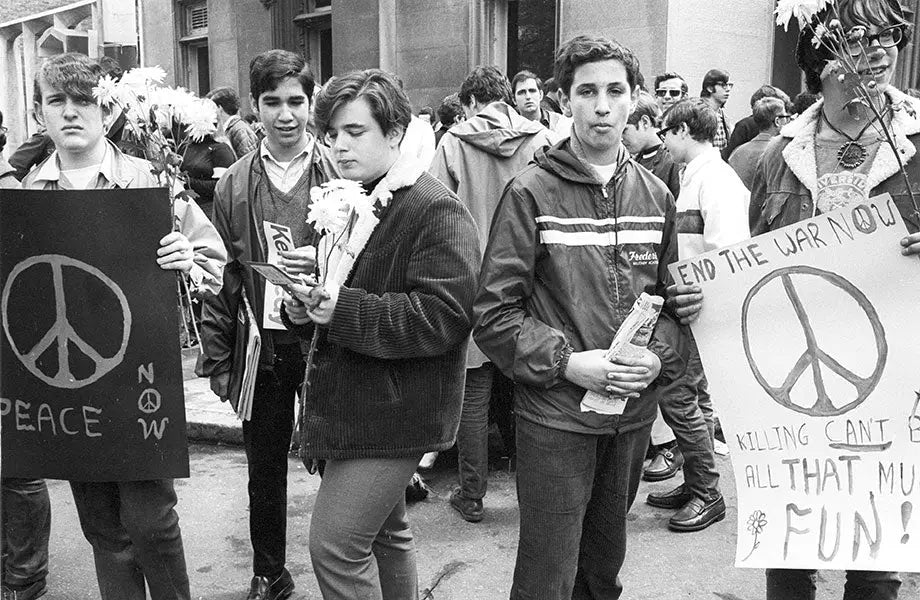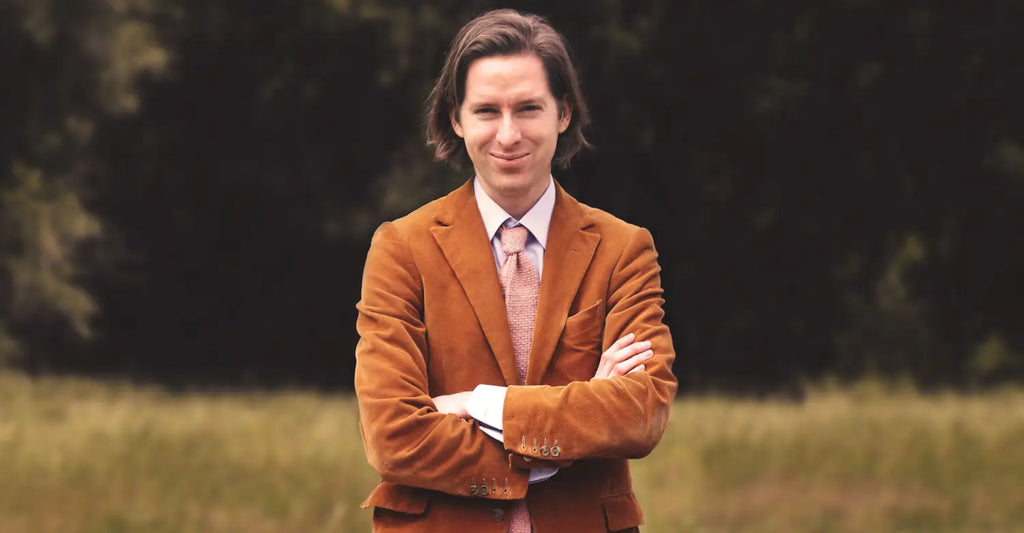The History of Corduroy
Corduroy dates back to ancient Egypt, where fabric was woven near the ancient capital of Al-Fustat. Named after the city, this heavy fabric became known as Fustian. Unlike corduroy, it didn’t have the raised texture. The corduroy we recognise today originated in 19th century Manchester, where its hard-wearing nature made it ideal for factory wear. For this reason, corduroy is known as ‘Manchester’ in some parts of Europe.
 Source: PA Images // Women's Land Army
Source: PA Images // Women's Land Army
It was also adopted as part of military uniforms - including the corduroy breeches worn by the Women’s Land Army during World War II. In the post-war period, corduroy’s popularity waxed and waned until it was revived by the 1960s counter-culture. Edward Heath – The President of the Board of Trade even claimed that The Beatles "saved the British corduroy industry".
 Source: Diana Davies via Folkway // Peace march in New York, 27th April 1968
Source: Diana Davies via Folkway // Peace march in New York, 27th April 1968
Corduroy reached peak popularity in the 1970s, where it was worn as a symbol of anti-establishment. Loved by musicians, artists and directors - it has been famously worn by Woody Allen, Bob Dylan, Pablo Picasso and Wes Anderson.
 Source: Den of Geek // Wes Anderson
Source: Den of Geek // Wes Anderson
Today, we use corduroy produced by Lancashire based Brisbane Moss, who have been producing the finest fabrics for over 150 years. They're now the largest remaining British manufacturer of corduroy. As seen in the chunky cord of our Musso Harrington Jacket and Freya Trench Coat, and fine needlecord of our Jane Box Jacket.
